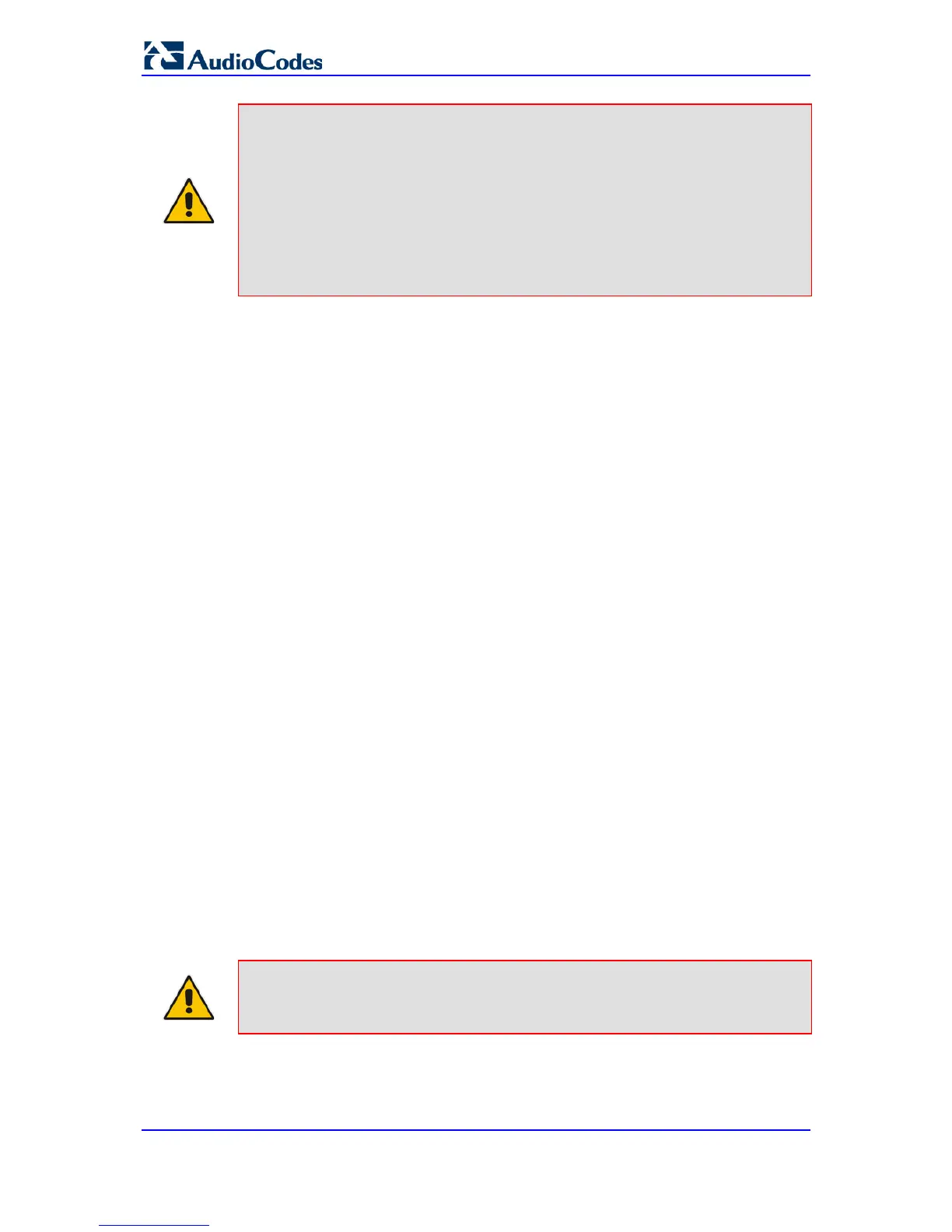Notes:
• Alternative routing based on IP connectivity is applicable only when a
proxy server is not used.
• As the device searches the Outbound IP Routing table for a matching
rule starting from the top, you must configure the main routing rule above
the alternative routing rules.
• You can configure up to two alternative routing rules.
• For configuring Tel-to-IP routing rules in the Outbound IP Routing table,
see 'Configuring Outbound IP Routing Table' on page 327.
The steps for configuring alternative Tel-to-IP routing based on IP connectivity are
summarized below.
To configure alternative Tel-to-IP routing based on IP connectivity:
1. In the Outbound IP Routing table, add alternative Tel-to-IP routing rules for specific
calls.
2. In the Routing General Parameters page (Configuration tab > VoIP menu > GW and
IP to IP > Routing > General Parameters), do the following:
a. Enable alternative routing based on IP connectivity, by setting the 'Enable Alt
Routing Tel to IP AltRouting' (Tel2IPEnable) parameter to Enable.
b. Configure the IP connectivity reason for triggering alternative routing, by setting
the 'Alt Routing Tel to IP Mode' parameter (AltRoutingTel2IPMode) to one of the
following:
♦ SIP OPTIONS failure
♦ Poor QoS
♦ SIP OPTIONS failure, poor QoS, or unresolved DNS
c. The device plays a tone to the Tel endpoint (for analog interfaces) whenever an
alternative route is used. This tone is played for a user-defined time configured by
the 'Alternative Routing Tone Duration' parameter.
26.5.2 Alternative Routing Based on SIP Responses
You can configure the device to do alternative routing based on the received SIP response.
If the SIP response code reflects an error (i.e., 4xx, 5xx, or 6xx) and you have configured
this specific response code as a trigger for alternative routing, then the device attempts to
re-route the call to an alternative destination.
You can configure up to five SIP response codes for triggering alternative routing. This is
done in the Reasons for Alternative Routing table, explained in this section.
Typically, the device performs alternative routing when there is no response at all to an
INVITE message after a user-defined number of INVITE re-transmissions, configured using
the SIPMaxRtx parameter. In such a scenario, the device issues itself the SIP response
code 408 "Request Timeout". If this release code is defined in the Reasons for Alternative
Routing table, then alternative routing is done.
Note: The device also plays a tone to the endpoint whenever an alternative route is
used. This tone is played for a user-

